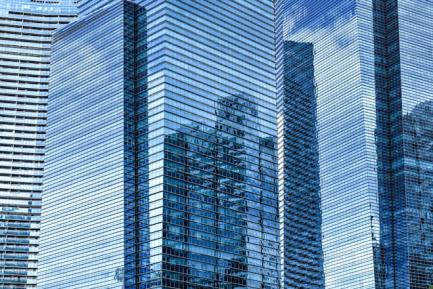Slowdown in world trade and investment
The weak trend in global trade is a key cause of concern, particularly in developed countries. In the years before the crisis, trade grew at a rate far above that of GDP but, after the ups and downs occurring at the peak of the recession, world trade’s performance has not been very dynamic. Many developed countries are fearful of this new pattern as they were hoping external sector could be a potential source of growth, given the poor recovery in domestic demand. Hence, the ongoing debate: will this change in trend observed in global trade continue over the next few years or is it temporary?
As this is a relatively new phenomenon, the debate regarding which factors might be altering the trend in worldwide trade is still ongoing among economists but there is some consensus that this is due to the convergence of several elements, especially increased protectionism and a slowdown in the formation of global value chains.
Another factor that seems to be crucial to understanding the recent trend in trade is the poor performance by investment over the last few years, a relatively widespread phenomenon in developed countries but also in some emerging economies.1 Specifically, different studies attribute around 50% of the slowdown in world trade to lower growth in investment.2
In developed countries, this poor trend in investment over the last few years is due to several factors such as the high leveraging of the corporate sector and the financial sector’s reduced credit capacity at the start of the recession, as well as the rise in uncertainty due to a number of shocks. However, to a greater or lesser extent depending on the country in question, these elements have tended to fade in the last few years but nevertheless investment has yet to liven up. That is why various studies suggest that, in addition to these temporary factors, this lower growth in investment is also due to the impact of new technologies. For example, those sectors most closely related to new technologies, which are also those enjoying the highest growth, invest a lot less that the classic industrial sectors.3 Although investment should become more dynamic in the short term as the aforementioned temporary factors continue to wane, the long-term growth prospects have also been reduced.
Regarding the emerging countries, this change in the pattern of investment can particularly be seen in China. The Asian giant is currently going through a far-reaching shift in its economic production model, moving away from an investment-export pattern and encouraging household consumption and the services sector. The impact of this change on world trade is not insignificant as the Asian country has been one of the driving forces behind growing trade flows (both in commodities and manufactured goods). The dynamism of Chinese investment, focused on infrastructures, meant that the country became the main demander of most basic metals in the 2000s, in many cases consuming almost 50% of the world’s production. However, the slowdown in the Asian giant’s investment has pushed down demand for commodities and, consequently, global trade flows. Although this is a less relevant factor than the weak investment trend in developed countries, its structural nature will have long-lasting implications for trade.
In short, the weakness of investment has been a key factor in the slowdown of global trade flows. Two conclusions result from this analysis. In the short term, the recovery in investment in developed countries will once again boost trade flows at a global level. However, in the medium term the change in China’s production model and the increasing importance of new technologies will limit such trade flows.
1. Investment is one of the GDP components with the highest import intensity. For example, for the average of OECD countries, for each euro of investment spent, 32 cents correspond to imported intermediate inputs.
2. Different studies suggest that weak investment may lie behind 40% to 75% of the slowdown in world trade. See, for example, the IMF, «Global Trade: What’s Behind the Slowdown», WEO, October 2016, Chapter 2; OECD «Cardiac arrest or dizzy spell: why is world trade so weak and what can policy do about it?», Economic Policy Paper, September 2016, no. 18.
3. For a more detailed discussion of the impact of new technologies on investment, see the articles in the Dossier «The Digital Economy:», published in MR07/2015.



